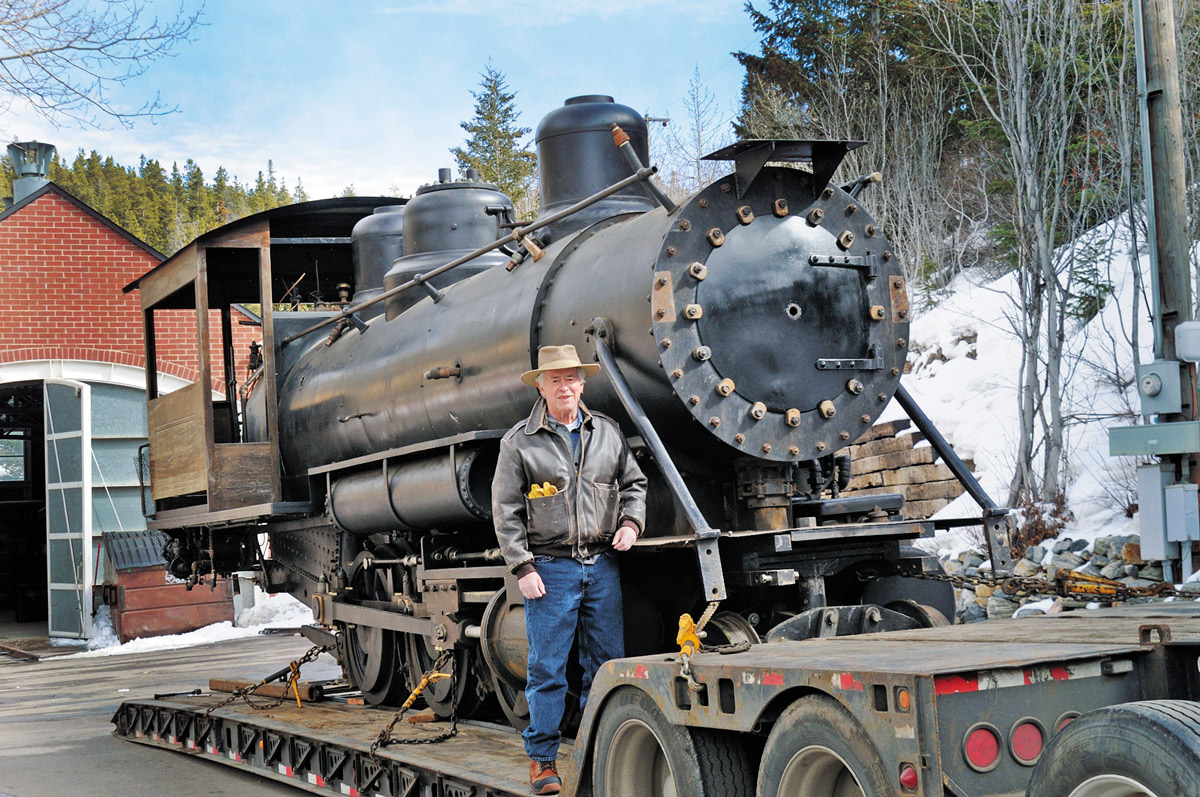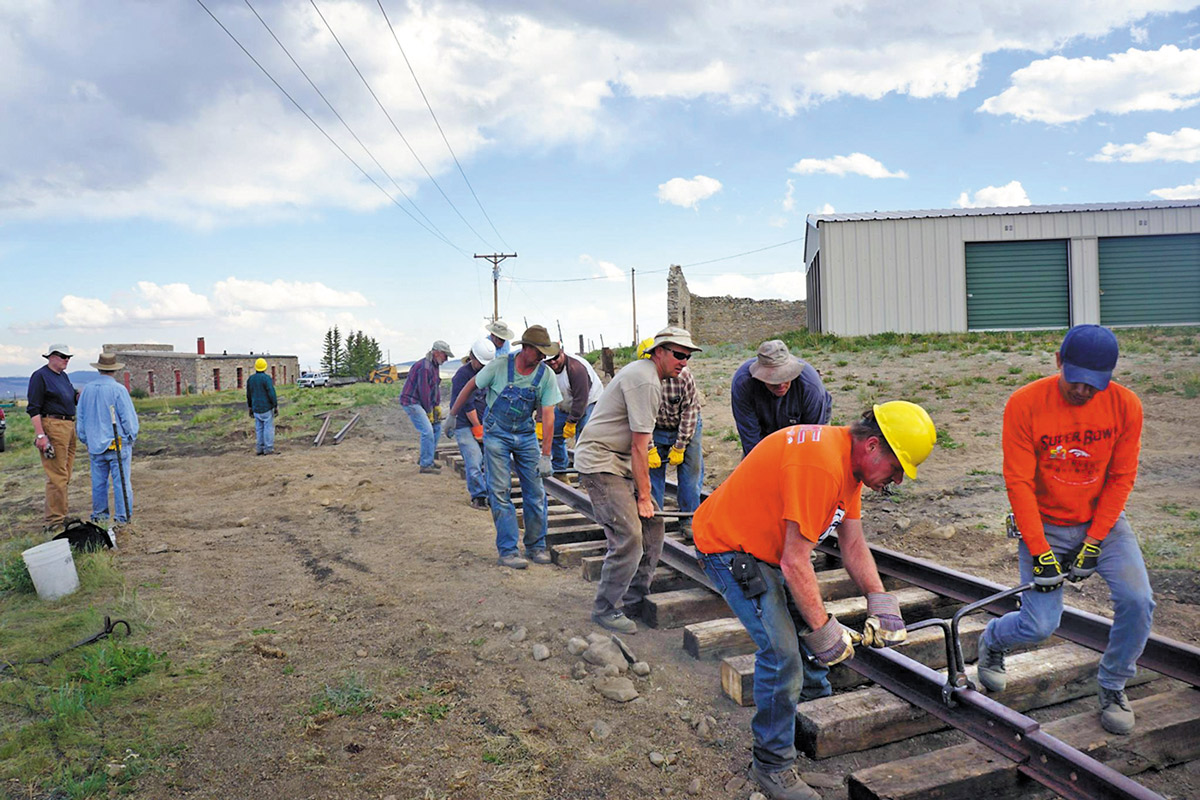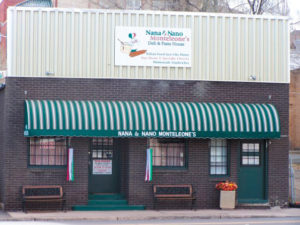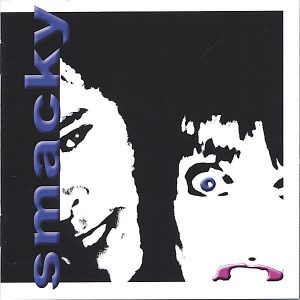
Article and photos by Laura Van Dusen
It’s been 80 years since the last train left the Como depot. Eighty years, a lifetime ago, since a train whistle gave a last shout pulling away from the station, and a narrow-gauge engine, steam belching from its stack, pulled rail cars across South Park.
That’s all about to change.
Thanks to efforts of Como Roundhouse owners Kathy Brantigan and Dr. Charles (Chuck) Brantigan and interested others, Engine No. 4, late of the Georgetown Loop Railroad, is relocating to Como. It’s expected by August 19, the date of Como’s 22nd Boreas Pass Railroad Day, an annual event celebrating the railroading history of the narrow-gauge South Park Line.
Although Engine No. 4 won’t carry passengers this summer and will never venture far from the confines of Como, there is still a lot to celebrate at this year’s Railroad Day.

The Brantigans bought the 1881 Como roundhouse in 2001. From the beginning, they planned to renovate the roundhouse into a museum of “big things that move,” said Dr. Brantigan, award-winning vascular surgeon and instructor at hospitals in the United States and Egypt. The big-things collection is growing, and includes: a letterpress and an offset press formerly used at the Flume newspaper when it was based in Fairplay, a narrow-gauge boxcar dating from 1880, and a portion of an 1878 narrow-gauge passenger car. Both cars formerly ran on the South Park Line.
This summer, Engine No. 4, built new in 1912 for use in the Klondike and Dawson City mines in Yukon Territory, Canada, joins the roundhouse collection as the biggest of the “big things that move.” Because of the Yukon history, Kathy Brantigan nicknamed the engine Klondike Kate – after a famous saloon singer and dancer of the gold mining era.
But it’s also called “Kathy’s train,” and for good reason. It was Kathy, president and tuba player of the Denver Brass, who first saw Engine No. 4 for sale and convinced Chuck that they should buy it. She was also the impetus behind the roundhouse purchase in 2001. It isn’t as unlikely a proposal as it sounds. The two are known for collecting and renovating historic buildings and have received numerous awards in historic preservation from the city of Denver and the state of Colorado.
[InContentAdTwo] Plans are for tracks between the Como depot and roundhouse, roughly 800 feet, to be completed by mid-August. Railfans from the Denver, South Park & Pacific Historical Society and South Park Rail Society, as well as South Park residents and others, worked every other weekend from Memorial Day until the end of July to build track. They welcome donations of money and tools to offset costs and can be contacted via www.southparkrail.com.
Passengers won’t ride the train on Railroad Day 2017 because of insurance. The cost of annual coverage is the same whether the train is steamed and running just one day or several days during the year. In this first year, with few chances to fire it up, the cost to allow riders is prohibitive.
Still, the engine will bring a special ambiance to the 22nd annual event as spectators witness the steamed-up Engine No. 4 with its tender (car behind the engine where the fireman feeds coal or wood into the fire and keeps the steam regulated), on display in front of the recently renovated Como Depot. It is planned that in succeeding years, passengers will ride in a converted gondola car around the Como yard, pulled by Engine No. 4. The train will never leave the immediate Como area, so passengers won’t travel far in distance. But the short trip will take riders out of their 21st-century world, to experience a bit of South Park’s railroading prime of the late 1800s.
According to information on southparkrail.com, Engine No. 4’s past has taken some interesting turns. After a two-year stint working the Klondike gold mines, No. 4 sat in storage for 29 years. At the outbreak of World War II, the engine sailed south by steamboat to work the White Pass & Yukon Railway until 1952, after which she was put on display in Skagway, Alaska.
She was bought in 1955 and moved to Oak Creek, Wisconsin, to work a proposed tourist railroad that never materialized. In 1960, No. 4 was moved to Waterford, Wisconsin, worked for one summer, and then was sent to the Petticoat Junction Railroad in Sevierville, Tennessee. There, as the Hooterville Cannonball, she was used for three days before the operation closed.
Beginning in 1969, the engine was used on the Gold Nugget Junction Railroad in Osage Beach, Missouri, was sidelined for repairs in 1979, and remained on display for a year before the operation closed. A game farm in El Reno, Oklahoma, was the next stop for Engine No. 4, but the operation didn’t get off the ground.
The engine sat for 20 years in an Oklahoma field until she was bought in 2005 by a church camp and moved to Adair, Oklahoma. A full restoration was begun by the camp and No. 4 was steamed up and tested, but then restoration stopped. The camp managers decided No. 4 was too big and heavy for their purposes.
In 2015, Engine No. 4 was sold to Colorado’s Georgetown Loop Railway. It was not powerful enough for the incline, and was put up for sale. The Brantigans bought the engine in February 2017. Kathy’s train was trucked by semi to Wasatch Railroad Contractors in Cheyenne, Wyoming for repairs and begins a new life this summer celebrating Como’s railroading history.
Como historian Laura Van Dusen is one of many railfans thrilled to see even small-scale railroading return to South Park. Boreas Pass Railroad Day, 9 a.m.-3:30 p.m. Aug. 19, offers self-guided tours throughout Como, at sites along Boreas Pass and at High Line Railroad Park in Breckenridge.



